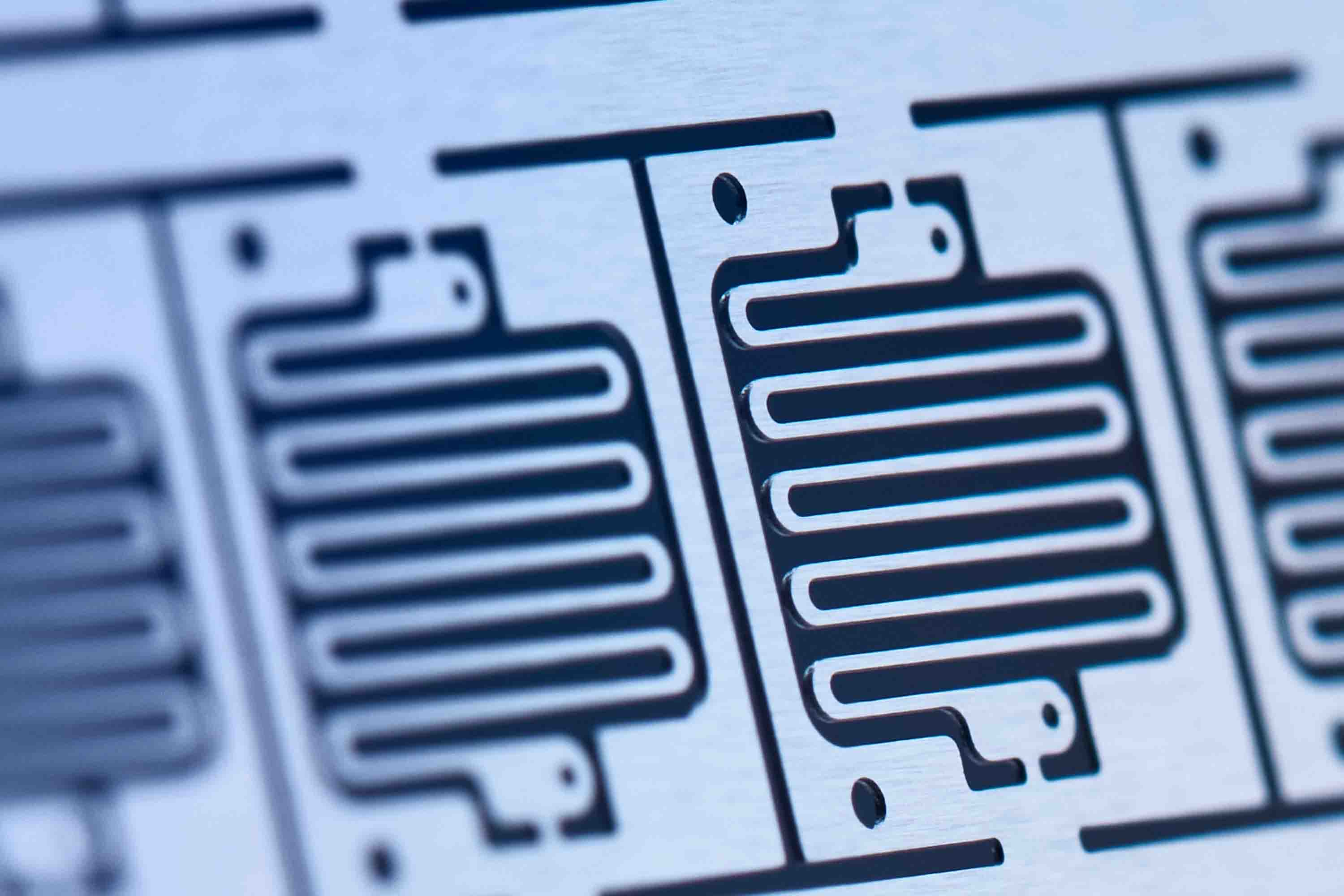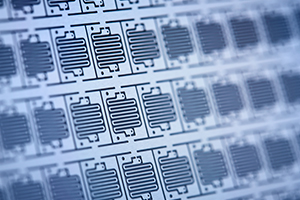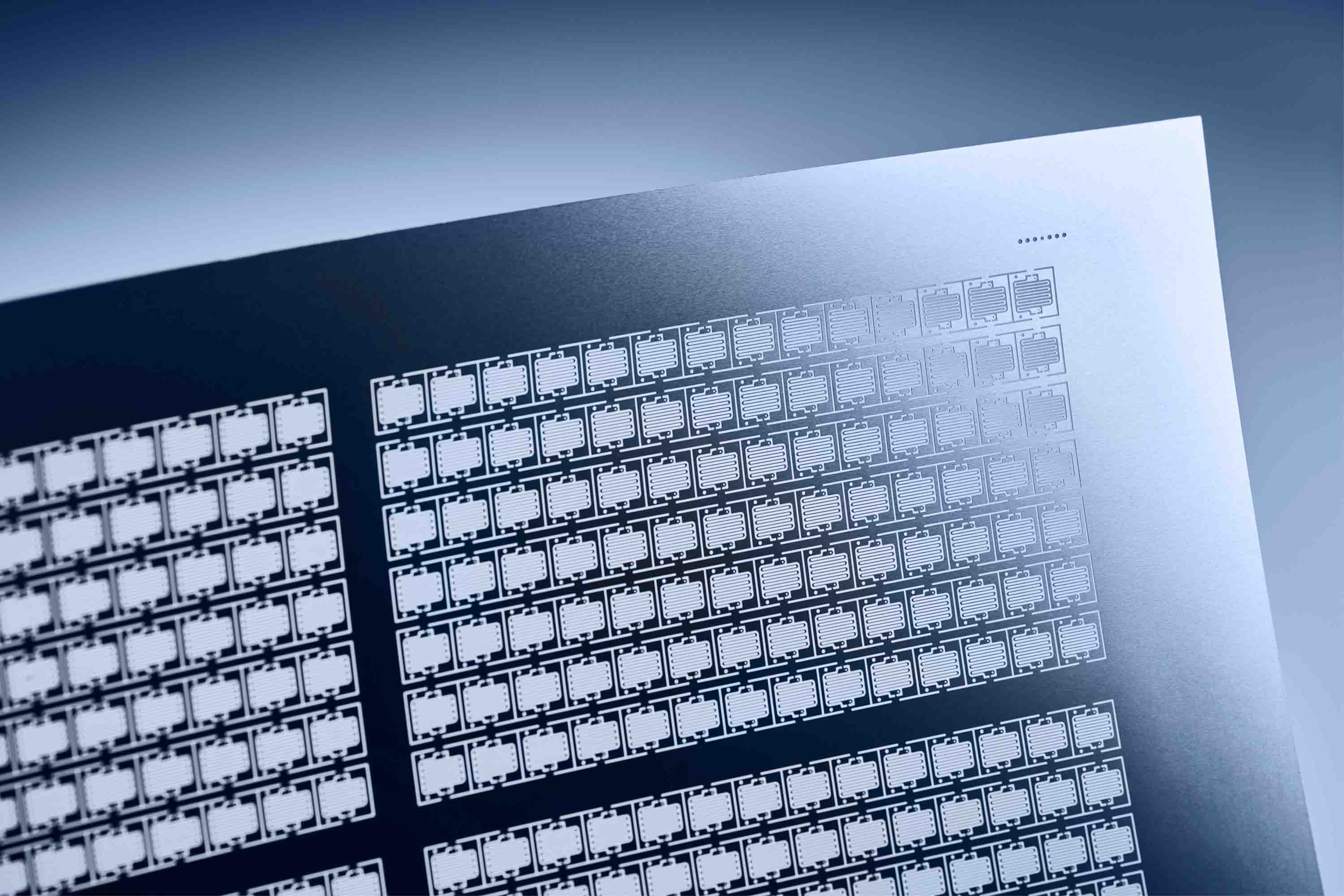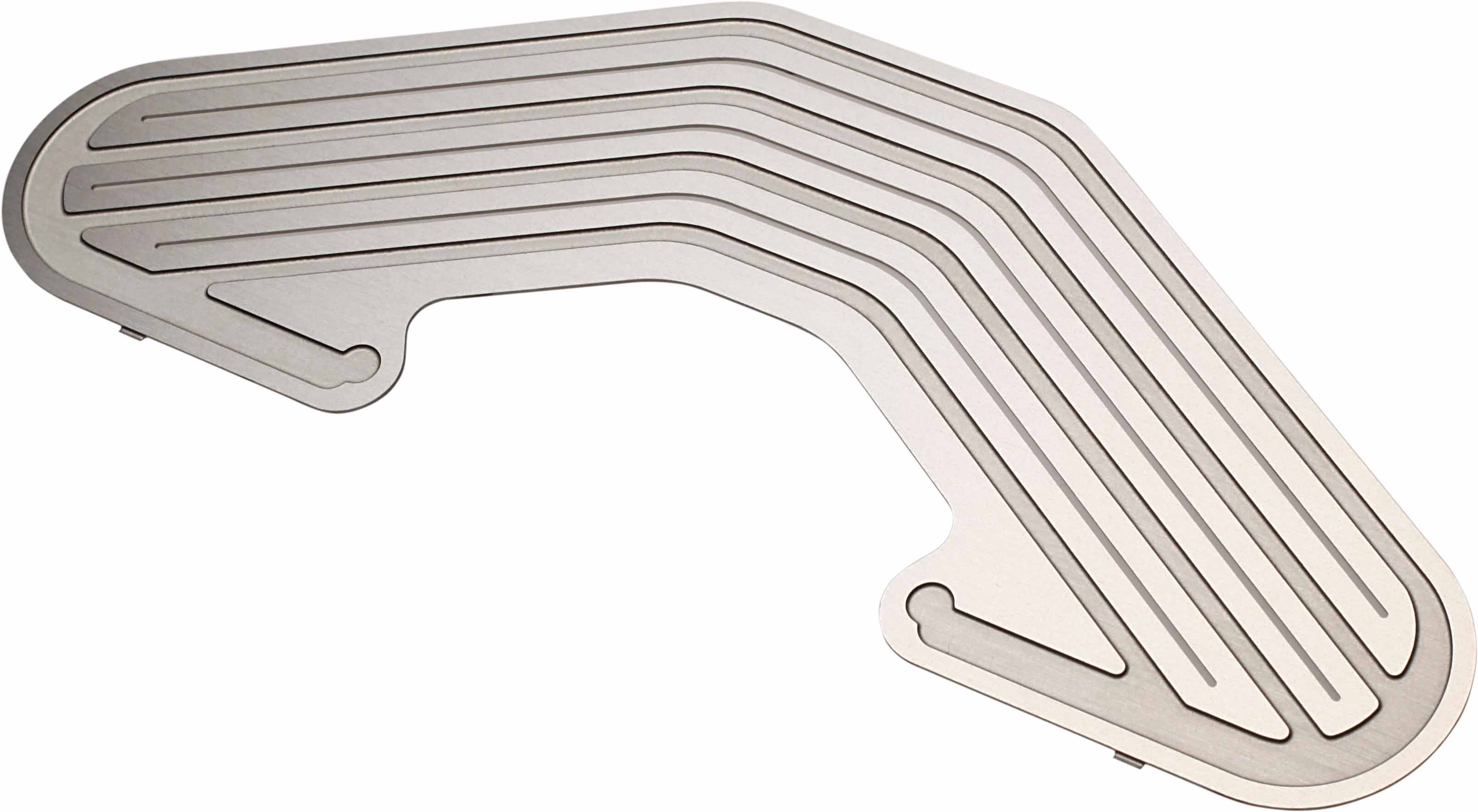Micro Heating Management
Micro heating management requires the precise control and distribution of heat at a micro-scale level in numerous applications. Components like micro heating elements (providing localised heat), heat exchangers (facilitating efficient heat transfer), and cooling plates (dissipating heat to maintain optimal operating temperatures) are essential in applications requiring fine thermal control in electronic devices, medical equipment, and specialised industrial processes. Photo chemical etching is ideal for creating these components due to its ability to produce intricate, detailed designs with high precision. Essential for the effective management of heat at such small scales, our process allows for the creation of complex patterns and microstructures in metals, which is crucial for the effective performance of micro heating management systems.


Etched Micro Heating Elements
Precision and uniformity in temperature distribution are critical in manufacturing micro heating elements as used in PCR equipment and e-cigarettes. Correct materials are required, and processing can be difficult. These materials need to be able to withstand high temperatures and thermal cycling without degrading. As devices become more compact, their internal components, including heating elements, need to be smaller and more complex. This miniaturisation adds another layer of complexity to the manufacturing process, which other manufacturing methods struggle to meet. Photo chemical etching offers significant advantages here as it allows for the creation of components with high precision and uniformity, which is essential for targeted heat generation in micro heating elements. It doesn’t induce stress in materials, helping to maintain their integrity and properties – the component behaves as designed when exposed to high temperatures.
Photo chemical etching is also ideal for producing intricate components, and is extremely cost-effective, especially for mass production. The process can be scaled easily, making it suitable for mass production with low tooling cost and without compromising on quality. The ability to rapidly prototype with photochemical etching allows for quicker design changes and innovation, a significant advantage in fast-paced industries.
Heat exchangers with Etched Microchannels
Heat exchangers require intricate and accurate channel geometries essential for efficient heat transfer. Conventional machining methods can introduce mechanical and thermal stresses that compromise performance. Photo chemical etching is exceptionally well-suited for manufacturing micro precision heat exchangers as it is capable of producing complex components with fluidic channels, such as plate heat exchangers, with high precision. One of the key advantages of the process is that it eliminates mechanical and thermal stresses typically associated with traditional methods. In traditional manufacturing processes, metal is often pressed to create the desired geometry and flow channels for heat exchangers, which can be time-consuming, expensive, and may cause material stress or burrs that require additional post-machining work. Photochemical etching allows for low-cost, quickly adaptable digital tooling, making it ideal for optimising designs at minimal cost.
Photochemical etching can achieve precision microchannels with consistent accuracy, enhancing the compactness and efficiency of heat transfer. It is also compatible with a range of materials, including stainless steel, aluminum, titanium, and Inconel, which are often challenging to process using conventional methods. Photochemical etching is an ideal choice for both prototyping and high-volume production of heat exchangers.


Etched Cooling Plates
Manufacturing micro precision cooling plates requires intricacy and accuracy of the cooling channels and overall dimensional precision of the plates. A significant challenge is ensuring uniformity and precision in the micro-scale features that are critical for effective heat dissipation. Photo chemical etching (PCE) eliminates mechanical stresses or deformities that other machining methods may introduce which compromise the efficiency of the cooling plates. PCE achieves the high level of detail necessary for micro channels, which are essential for efficient heat transfer without the time and cost of traditional methods. The complexity of design and the need for high precision in such small scales is exactly what photochemical etching is well-suited for.
Producing micro precision cooling plates with PCE creates intricate, detailed designs with high precision and consistency. This process allows for the fabrication of complex patterns and microstructures in metals, crucial for the effective performance of micro cooling systems. Uniformity in component thickness as well as avoiding stresses or deformities are vital for the functionality and longevity of cooling plates.